Filter by
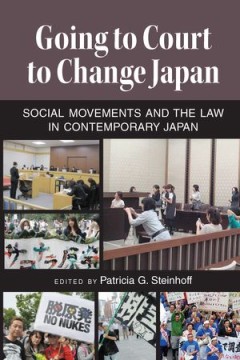
Going to Court to Change Japan: Social Movements and the Law in Contemporary …
Going to Court to Change Japan takes us inside movements dealing with causes as disparate as death by overwork, the rights of the deaf, access to prisoners on death row, consumer product safety, workers whose companies go bankrupt, and persons convicted of crimes they did not commit. Each of the six fascinating case studies stands on its own as a detailed account of how a social movement has pe…
- Edition
- -
- ISBN/ISSN
- 9780472901630
- Collation
- -
- Series Title
- -
- Call Number
- 301.952 GOI g
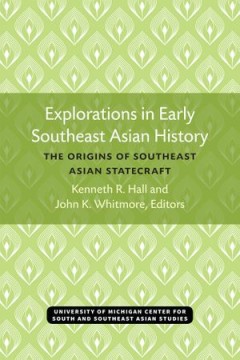
Explorations in Early Southeast Asian History: The Origins of Southeast Asian…
While following the probes of foreign individuals into various obscure parts of Southeast Asia over the centuries is a diverting and entertaining pastime, the purpose of this volume is to investigate this past with the mind, to question and postulate upon the historical patterns that have developed from earlier study of the area, and to bring concepts from other areas and disciplines to bear on…
- Edition
- -
- ISBN/ISSN
- 9780472901951
- Collation
- -
- Series Title
- -
- Call Number
- 320 EXP e
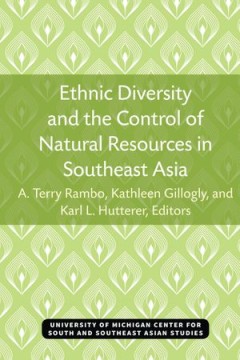
Ethnic Diversity and the Control of Natural Resources in Southeast Asia
The authors consider the ways in which the high degree of ethnic diversity within the region is related to the nature of tropical Asian environments, on the one hand, and the nature of Southeast Asian political systems and the ways in which they manipulate natural resources, on the other. Rather than focus on defining the phenomenon of ethnicity, this book examines the different social evolutio…
- Edition
- -
- ISBN/ISSN
- 9780472902309
- Collation
- -
- Series Title
- -
- Call Number
- 305.8 ETH e
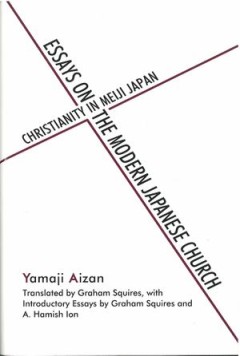
Essays on the Modern Japanese Church: Christianity in Meiji Japan
Essays on the Modern Japanese Church (Gendai Nihon kyokai shiron), published in 1906, was the first Japanese-language history of Christianity in Meiji Japan. Yamaji Aizan’s firsthand account describes the reintroduction of Christianity to Japan—its development, rapid expansion, and decline—and its place in the social, political, and intellectual life of the Meiji period. Yamaji’s overal…
- Edition
- -
- ISBN/ISSN
- 9780472901913
- Collation
- -
- Series Title
- -
- Call Number
- 808.84 YAM e
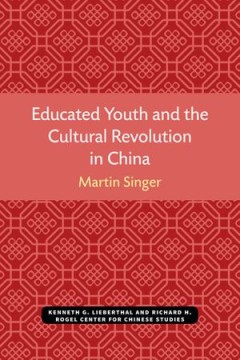
Educated Youth and the Cultural Revolution in China
The Cultural Revolution was an emotionally charged political awakening for the educated youth of China. Called upon by aging revolutionary Mao Tse-tung to assume a “vanguard” role in his new revolution to eliminate bourgeois revisionist influence in education, politics, and the arts, and to help to establish proletarian culture, habits, and customs, in a new Chinese society, educated young …
- Edition
- -
- ISBN/ISSN
- 9780472901555
- Collation
- -
- Series Title
- -
- Call Number
- 301.951 SIN e
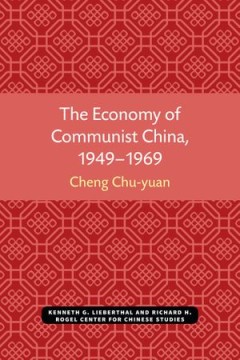
The Economy of Communist China, 1949–1969
Economic development in mainland China during the first two decades of Communist control provides a typical example for the difficult task to transform a vast underdeveloped agrarian economy into a modern industrial one. In the first half of this period, a series of massive transformations of social and economic institutions was accompanied by a drafted industrialization program; the result was…
- Edition
- -
- ISBN/ISSN
- 9780472902200
- Collation
- -
- Series Title
- -
- Call Number
- 338.951 CHE e
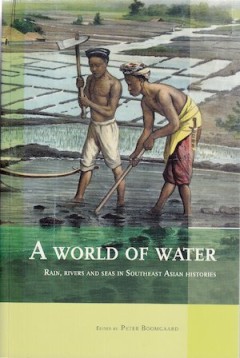
A World of Water Rain, Rivers and Seas in Southeast Asian Histories
Water, in its many guises, has always played a powerful role in shaping Southeast Asian histories, cultures, societies and economies. This volume, the rewritten results of an international workshop, with participants from eight countries, contains thirteen essays, representing a broad range of approaches to the study of Southeast Asia with water as the central theme. As it was exposed to the se…
- Edition
- -
- ISBN/ISSN
- 9789067182942
- Collation
- -
- Series Title
- -
- Call Number
- -

Indian Water in the New West
Brings together the views of engineers, lawyers, ecologists, economists, professional mediators, federal officials, an anthropologist, and a Native American tribal leader--all either students of these processes or protagonists in them--to discuss how the legitimate claims of both Indians and non-Indians to scarce water in the West are being settled.
- Edition
- -
- ISBN/ISSN
- -
- Collation
- -
- Series Title
- -
- Call Number
- -

The Cherokee Perspective Written by Eastern Cherokees
In 1973, Cherokee students at the Qualla Boundary started a student organization with the intention of improving the educational prospects among Native Americans attending non-Indian colleges and universities. Under the direction of Laurence French and Charles Jim Hornbuckle, the students interviewed Cherokee elders and received help from the American Indian Historical Society in order to gain …
- Edition
- -
- ISBN/ISSN
- 9781469638515
- Collation
- -
- Series Title
- -
- Call Number
- -

In Defense of La Raza The Los Angeles Mexican Consulate and the Mexican Comm…
Mexican communities in the United States faced more than unemployment during the Great Depression. Discrimination against Mexican nationals and similar prejudices against Mexican Americans led the communities to seek help from Mexican consulates, which in most cases rose to their defense. Los Angeles’s consulate was confronted with the country’s largest concentration of Mexican Americans, f…
- Edition
- -
- ISBN/ISSN
- -
- Collation
- -
- Series Title
- -
- Call Number
- -
 Computer Science, Information & General Works
Computer Science, Information & General Works  Philosophy & Psychology
Philosophy & Psychology  Religion
Religion  Social Sciences
Social Sciences  Language
Language  Pure Science
Pure Science  Applied Sciences
Applied Sciences  Art & Recreation
Art & Recreation  Literature
Literature  History & Geography
History & Geography